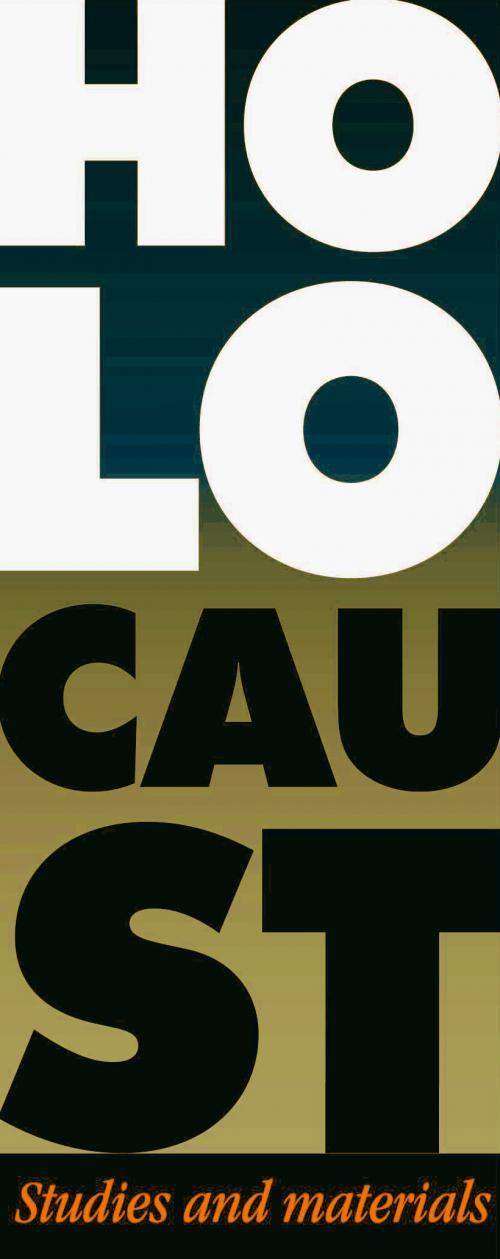Call for Articles | The Holocaust in Public Space: Articulations, Abuses, Interceptions

Deadline for Proposals: 15 September 2020
EHRI partner, the Polish Center for Holocaust Research call for articles for volume 17 of the Holocaust. Studies and Materials annual (2021), devoted to various forms of the Holocaust’s presence in public space. This means not only the Holocaust history or ways of its commemoration, but also its ideologization and instrumentalization for political purposes, as well as broadly-defined representations of the Holocaust experience in art, film, and literature, the exhibition strategies in museums and commemorative practices in public space, and, last but not least, the Holocaust’s presence in the new media, chiefly on the Internet (both educational websites, websites of official research or museum institutions, social media, and initiatives undertaken by private individuals and social organizations).
Thus the editorial staff returns to the issues which constituted the core of volume 6 (2010), though in an different and expanded form. By doing this they wish to understand the reasons for the severing of the historical continuity in the comprehension of the Holocaust (as a past event of a specified structure) and its transformation into individual currently updated memory facts appropriated and taken over by individuals and entire communities. Back in 2010, the interest was in the subject matter halfway between ethics and esthetics: the Holocaust kitsch and the various abuses in the journalistic, literary, and artistic representation of the Holocaust and in the public discourse. This is a reflection relatively ingrained in the contemporary humanities (see the classic works by Tom Segev — The Seventh Million. The Israelis and the Holocaust [1991], Peter Novick — The Holocaust and Collective Memory. The American Experience [1999], Tim Cole Selling the Holocaust. From Auschwitz to Schindler. How History is Bought, Packaged, and Sold [1999], or Ruth Franklin — A Thousand Darknesses. Lies and Truth in Holocaust Fiction [2011]). It does not exhaust the subject matter of the contemporary ‘life of the Holocaust’, which, after German art historian Aby Warburg, could be called its ‘posthumous life’ (Nachleben).
Now, it is proposed to broaden the research field and the reflection on public space understood similarly to Habermas’ public space as a social and symbolic territory where various languages, discourses, narrations, and strategies of thinking/writing/presenting the Holocaust clash and where various ‘policies’ of its use or exploitation are used. The analytic observation and scholarly interpretation of the manifestations of this presence take place on the one hand in the sphere of cognitive values (truth — falsity), moral (good — evil; use — abuse), esthetic (for instance, categories of appropriateness and inappropriateness of representation), pragmatic (what pays off economically and politically). On the other hand, in the spheres of cultural production and power (Bourdieu), where the stake is detaching the Holocaust from its historical foundation and entangling it in various ideological games, disputes, the market system.
Suggested subject matter:
- The Holocaust vis-a-vis the holocausts in the media/public discourse (the usefulness of making analogies between the Holocaust and the post-war social facts of a completely different character and scope, but with a very potent emotional load such as the ‘holocaust of animals’, abortion, and political, religious or other practices, plus the dangers resulting from making such analogies);
- The Righteous and the ‘Righteous’: the (contemporary) history of the figure of the Righteous, its narrative representations, newest historical analyses, and the discourse on the Righteous gone astray;
- From popularization to banalization (in the sphere of the editing of Holocaust testimonies, popularization of knowledge on the Holocaust, and educational enterprises); From kitsch, graphomania, and curiosities through various esthetic and moral abuses (including pornographization) to commercialization (in the sphere of fiction, prose, poetry, drama, reportage, essay, memorial literature; in the sphere of visual arts, film, and theater); Historical politics, the instrumentalization of the Holocaust history for political and ideological purposes, also in school education; The necessity to teach about the Holocaust and the dangers connected with it; the challenges that Holocaust education faces today;
- Strategies of Holocaust commemoration: exhibition discourses in historical museums, commemorative practices (campaigns, installations, memorials, local initiatives), etc.
- The presence of the Holocaust on the Internet: from digitalization of documents through techniques of substituting originals with digital copies and making archives available online to abuses and offences connected with hate speech
Read more about deadlines, procedures and text requirements on the website of Holocaust Studies and Materials
